As an Amazon Associate DcSoundOp earns from qualifying purchases.
Electro-Voice 644 Sound Spot Microphone
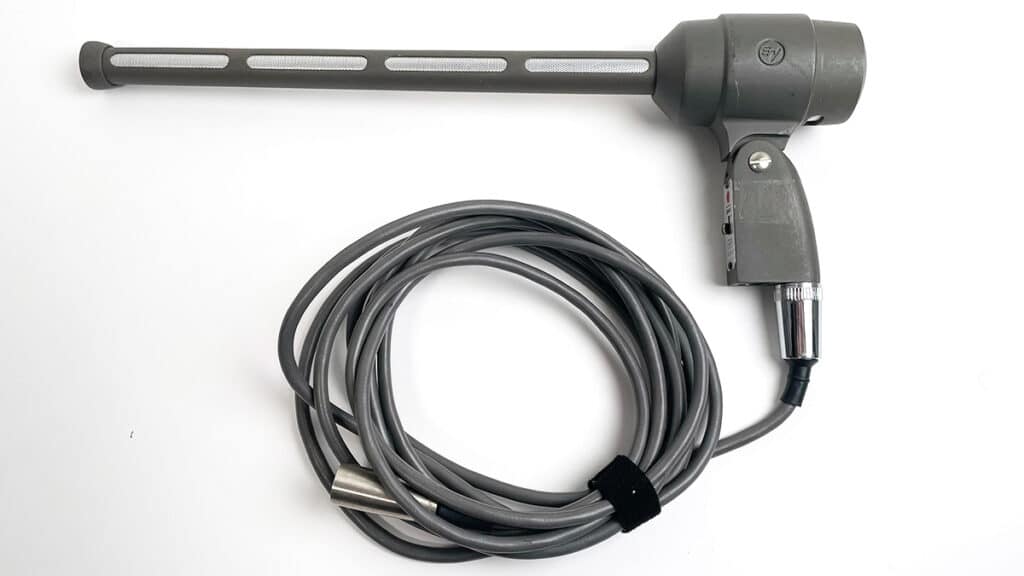
So, you’ve bought a nice vintage EV microphone, now what? Tons of them are sold as non-working or not tested, and in my experience, a lot of that has to do with the cable simply being missing or wired incorrectly. The microphones themselves are incredibly robust, well-built, and should last a lifetime. With a bit of knowledge, we can get many of these mics working again without too much effort.
Electro-Voice used the Amphenol 91-MC4F (multi-connector 4 pin) screw-on connector on their popular microphones for many years. Originally these paired with their own QC-4F connector (shown below), which was an in-house adaptation of the Amphenol MC4M.
If you happen to pick one up without the original cable, you can still find those connectors online. They are expensive, though, and new old stock at best. Here’s a seller on Etsy that has them for $22 at the time of writing. Here’s another with more stock, but charging $32 plus shipping – Amphenol 91-MC4F. If you do have the original cable, be aware that it was likely wired for hi-impedance operation from the factory.
If you’re building your own or want to check your original one, the pin-out is as follows:
- Pin 1 = Shield
- Pin 4 = Pin 3 on the XLR end
- Pin 2 = hi-impedance
- Pin 3 = low-impedance (pin 2 on XLR end)
To switch from high to low impedance, slide the pin from the second hole into the third hole. There are no tools required to swap pins around in these connectors. The pins in holes one and four should not be moved. You could choose to wire a 1/4″connector instead of the XLR too. In that case, you’ll only connect pins one and two.
Martin Mitchell’s website has a great scan of the original 644 spec sheet with all of the wiring info you could ever need – https://martinmitchellsmicrophones.files.wordpress.com/2016/12/644-eds.pdf
Shop the Electro-Voice store on Amazon
This model 644 is in the factory original TV-gray non-reflecting paint. Other models of this mic were offered in a highly polished chrome finish, which obviously reflected light quite a bit. This is the earliest version of the famous Electro-Voice beige paint you know from their RE-20 broadcast microphone.
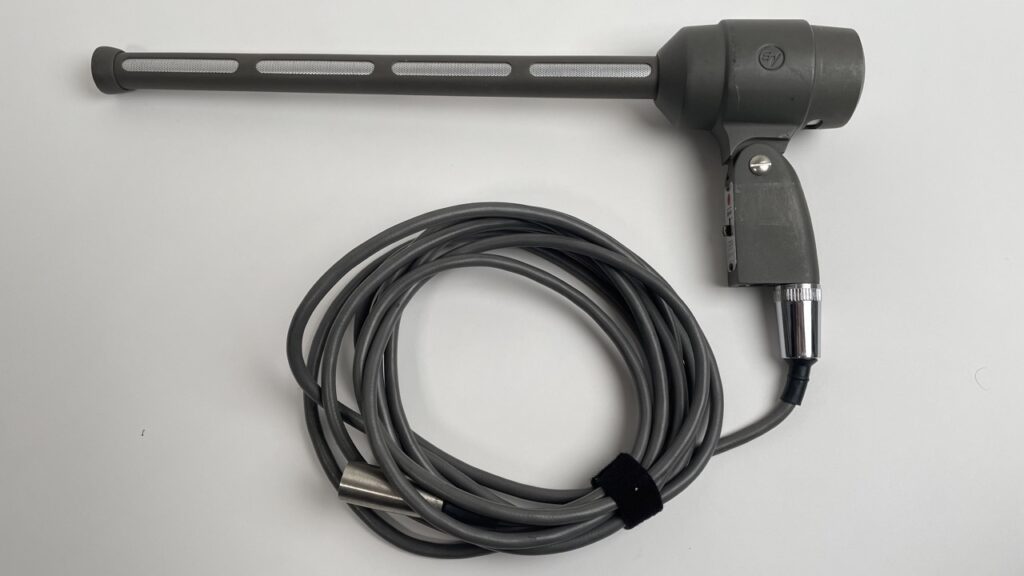
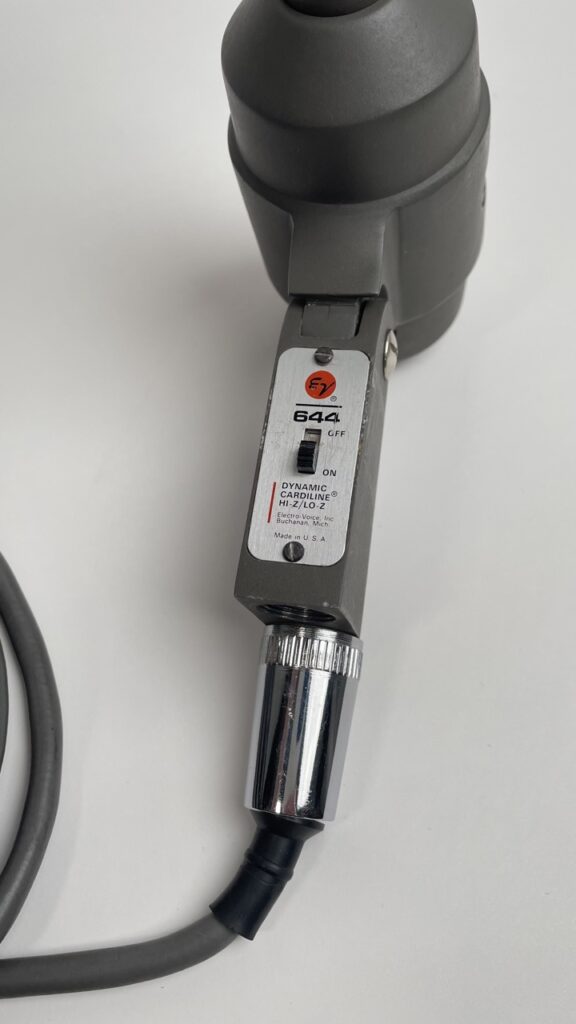
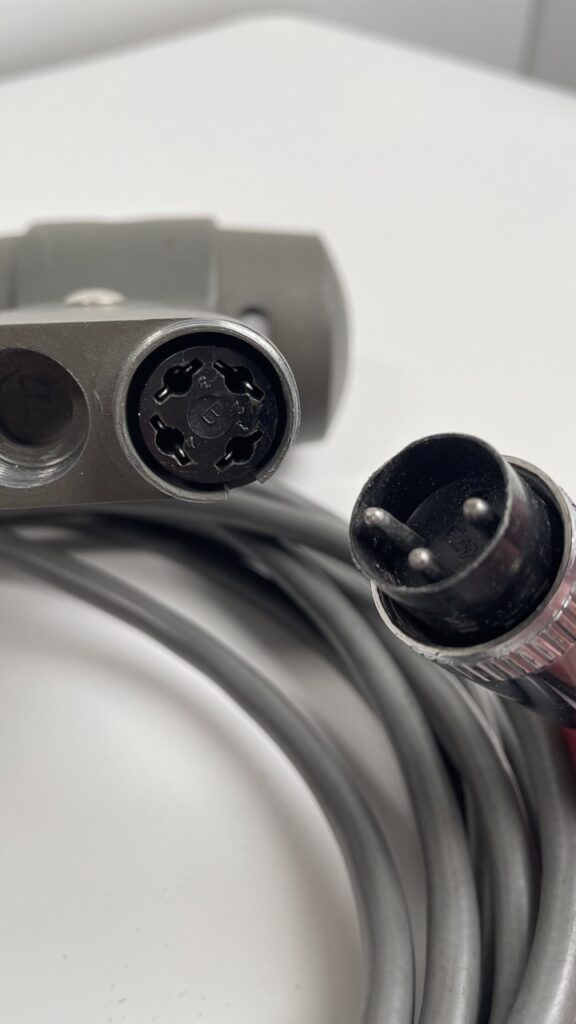
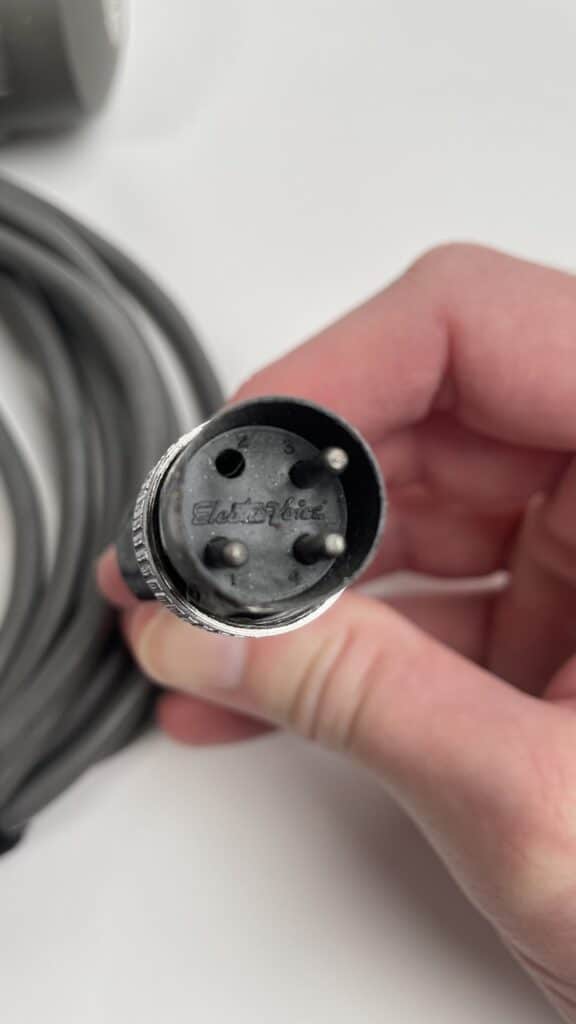
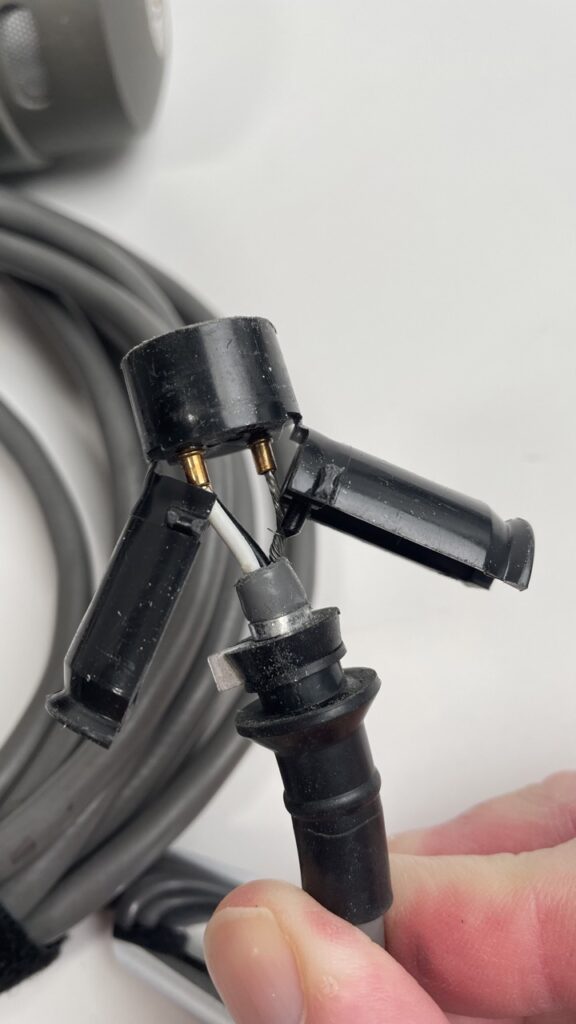
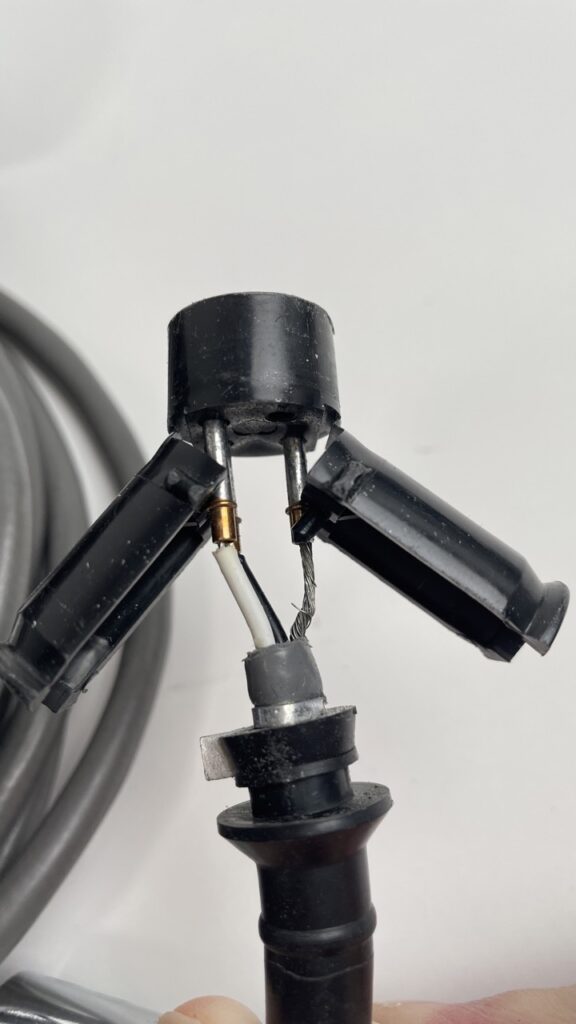
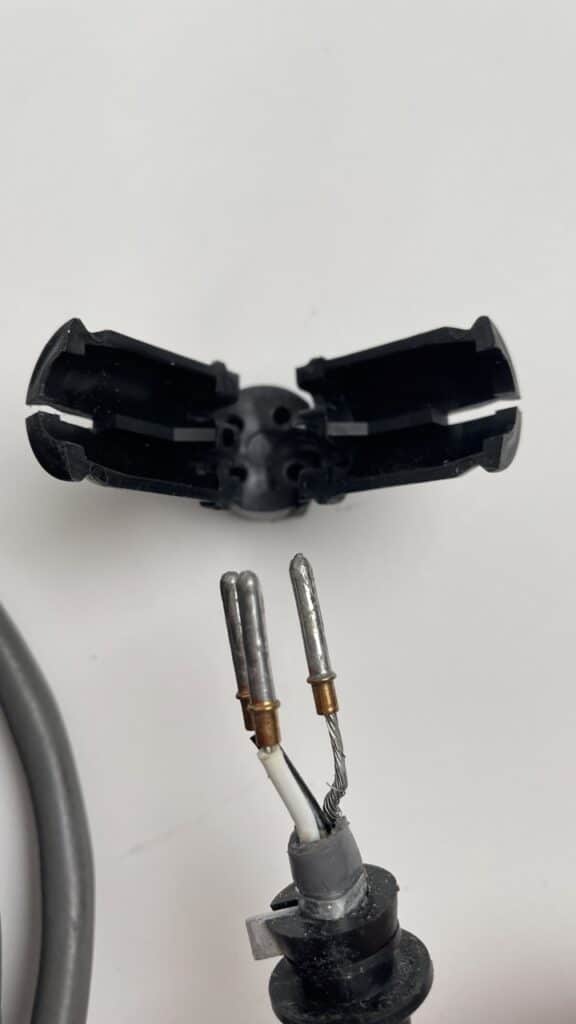
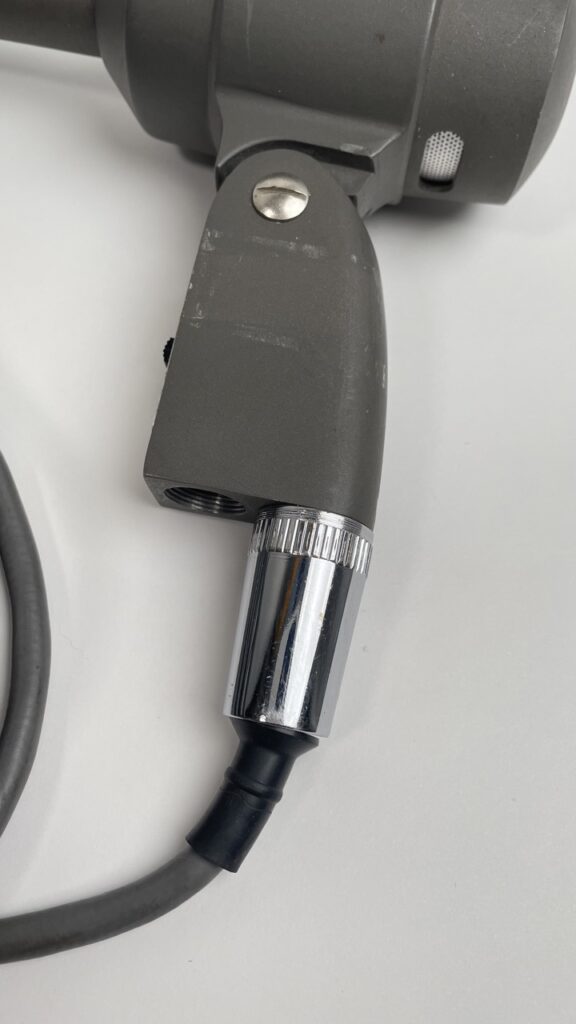
Amazon and the Amazon logo are trademarks of Amazon.com, Inc, or its affiliates.
